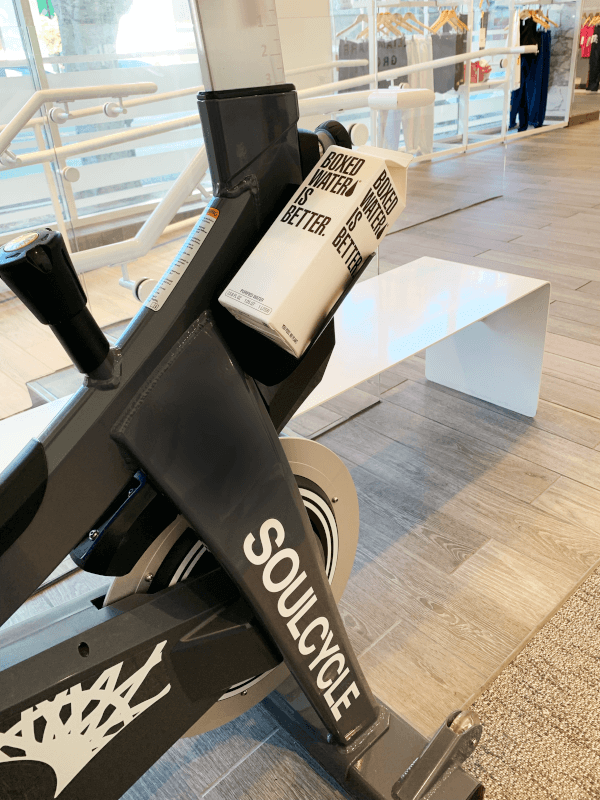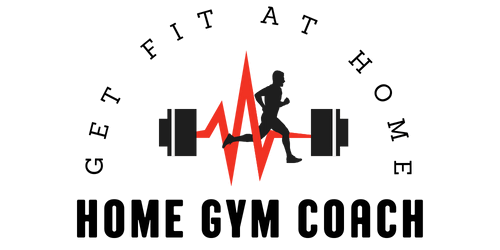Have you ever wanted to improve your motor skills but didn’t know where to start? Look no further! In this article, you’ll discover the secrets behind custom workout plans specially designed to help you build and enhance your motor skills. Whether you’re looking to improve your coordination, increase your agility, or boost your overall dexterity, these personalized workout plans will guide you towards success. Say goodbye to feeling clumsy or lacking control and hello to a more confident and capable you. Get ready to take your motor skills to the next level with these customized workouts that are tailored just for you.

Understanding Motor Skills
Motor skills refer to the ability to use the muscles and coordinate movements effectively. These skills can be broadly categorized into two types: fine motor skills and gross motor skills.
Fine Motor Skills
Fine motor skills involve the use of small muscles, particularly in the hands and fingers, to accomplish tasks that require precision and dexterity. Examples of activities that rely on fine motor skills include writing, buttoning a shirt, or tying shoelaces.
Gross Motor Skills
Gross motor skills, on the other hand, involve the use of larger muscles in the body, such as those in the arms, legs, and core, to perform activities that require strength, balance, and coordination. Actions like running, jumping, and throwing a ball are all dependent on gross motor skills.
Benefits of Building Motor Skills
Building motor skills through regular exercise and targeted training can have numerous benefits for individuals of all ages.
Improved Coordination
One of the key advantages of building motor skills is improved coordination. Both fine and gross motor skills training help enhance the ability to synchronize movements and perform tasks with greater accuracy and control. This can have a positive impact on everyday activities, as well as complex physical tasks.
Enhanced Cognitive Development
Motor skills development has also been linked to enhanced cognitive development. The brain and body are closely connected, and as we engage in physical activities that challenge our motor skills, we stimulate brain areas responsible for memory, attention, and problem-solving. This, in turn, can improve cognitive abilities and overall brain function.
Better Physical Fitness
Engaging in exercises that target motor skills helps improve physical fitness. Both fine and gross motor skills training involve movement, which can increase overall strength, endurance, and flexibility. As a result, individuals who actively work on building motor skills are likely to experience improved physical health and reduced risk of certain diseases.
Increased Confidence
Another significant benefit of building motor skills is increased confidence. As individuals see their progress in mastering specific motor skills, their self-esteem and belief in their abilities tend to grow. This newfound confidence often extends beyond the realm of physical activities and can positively influence various aspects of life.

Assessing Current Fitness Level
Before embarking on a custom workout plan, it is essential to assess your current fitness level. This evaluation will help you determine the starting point and identify areas that require improvement.
Consulting with a Professional
One option for assessing your fitness level is to consult with a professional. This can be a fitness trainer, physical therapist, or occupational therapist, depending on your specific needs and goals. These professionals can conduct various assessments to evaluate your motor skills, strength, flexibility, and overall fitness.
Self-Assessment
If consulting with a professional is not feasible, you can also conduct a self-assessment. Start by observing your abilities and limitations in different motor skills and physical activities. Pay attention to areas where you feel confident and areas where you struggle. This self-awareness will provide valuable information as you design your custom workout plan.
Setting SMART Goals
Once you have assessed your current fitness level, it is important to set goals that are specific, measurable, attainable, relevant, and time-bound (SMART goals). SMART goals provide clear direction and help you track progress effectively.
Specific
Set specific goals that clearly define what you want to achieve. For example, instead of setting a general goal like “improve fine motor skills,” specify the specific skill you want to enhance, such as “improve handwriting legibility.”
Measurable
Make sure your goals are measurable so that you can gauge your progress over time. Assign quantitative parameters to your goals, such as “increase the number of pencil control exercises completed without errors from 10 to 25.”
Attainable
Ensure that your goals are attainable and realistic. Consider your current abilities, resources, and time constraints when setting your goals. Setting unattainable goals can lead to frustration and hinder progress.
Relevant
Choose goals that are relevant to your overall objectives and align with your interests and needs. If your goal is to improve motor skills for a specific hobby or vocational pursuit, make sure the exercises and activities you choose are directly related.
Time-Bound
Set a timeline for achieving your goals. Having a deadline creates a sense of urgency and provides motivation to stay committed. For example, set a goal to “achieve improved balance within three months.”

Designing a Custom Workout Plan
With your goals clearly defined, it’s time to design a custom workout plan that focuses on building the specific motor skills you want to improve.
Identifying Targeted Motor Skills
Review your goals and identify the specific motor skills you want to target. For fine motor skills, this may include tasks like handwriting, using scissors, or tying knots. For gross motor skills, you may focus on activities like running, jumping, or balancing.
Selecting Appropriate Exercises
Choose exercises and activities that directly align with your targeted motor skills. For fine motor skills, this might involve tasks like finger dexterity exercises, pencil grip exercises, or sensory play with small objects. For gross motor skills, activities like walking, skipping, hopping, or balance exercises can be included.
Determining Frequency and Duration
Determine how often and for how long you will engage in your custom workout plan. Consistency is key to building motor skills, so aim for regular practice. For example, you may decide to engage in your custom workout plan for 30 minutes, three times a week. Adjust the frequency and duration based on your ability and schedule.
Exercise Examples for Building Fine Motor Skills
To help you get started, here are some exercise examples that can be incorporated into your custom workout plan to specifically target fine motor skills:
Hand and Finger Dexterity Exercises
Practice exercises that involve hand and finger movements, such as finger taps, finger stretches, or finger touch patterns. These exercises improve finger control and coordination.
Pencil and Scissor Activities
Engage in activities that require precise pencil control, such as tracing shapes, connecting dots, or coloring within lines. Cutting activities with scissors can also help improve hand-eye coordination and fine motor skills.
Sensory Play
Incorporate sensory play with small objects, such as picking up small beads, sorting buttons by color or size, or manipulating playdough. These activities stimulate the senses and improve fine motor skills.

Exercise Examples for Building Gross Motor Skills
Here are some exercise examples that can be included in your custom workout plan to target gross motor skills:
Walking, Running, and Skipping
Engage in activities that involve walking, running, and skipping. Start with shorter distances and gradually increase speed and intensity to improve endurance and coordination.
Jumping and Hopping
Practice jumping and hopping exercises, such as jumping jacks, two-foot jumps, or hopping from one foot to the other. These activities enhance lower body strength, balance, and coordination.
Balancing Activities
Include balancing activities like standing on one leg, walking on a balance beam, or using a wobble board. These exercises help improve core strength and stability, which are fundamental for gross motor skills.
Incorporating Motor Skill Building into Daily Routine
Building motor skills doesn’t have to be limited to dedicated exercise sessions. You can incorporate motor skill building into your daily routine to maximize progress and make it a sustainable habit.
At-Home Exercises
Perform motor skill exercises at home, such as squeezing stress balls, threading beads onto a string, or playing video games that require fine motor control. This allows you to practice regularly without the need for additional equipment.
Outdoor Activities
Take advantage of outdoor activities to build motor skills. Play catch with a ball, ride a bike, or engage in playground activities like climbing or swinging. These activities provide opportunities for gross motor skill development while enjoying the outdoors.
Incorporating Motor Skills in Work or School
Find ways to integrate motor skill building into your work or school environment. Use a stress ball during meetings or lectures to improve hand strength and dexterity. Take frequent breaks for short physical activities like stretching or quick walks.

Tracking Progress and Adjusting the Workout Plan
As you engage in your custom workout plan, it’s crucial to track your progress and make necessary adjustments to ensure continued improvement.
Keeping a Record
Keep a record of your exercises, the number of repetitions or duration, and any challenges or improvements you experience. This record will help you track progress and identify areas that may require additional focus.
Monitoring Improvement
Regularly assess your motor skills and measure your progress against your goals. Observe any changes in performance, accuracy, or endurance. If necessary, modify your exercises or increase the intensity to continuously challenge yourself and promote further improvement.
Making Necessary Modifications
Be open to making modifications to your workout plan as you progress. As you build motor skills, you may find that certain exercises become easier or less challenging. At this point, it’s important to adjust your routine by increasing difficulty or introducing new exercises to maintain progress.
Safety Considerations
When engaging in any physical activity, it’s important to prioritize safety. Consider the following safety considerations to minimize the risk of injury and ensure a positive experience:
Proper Warm-Up and Cool-Down
Before starting any exercise, warm up your muscles with gentle movements and stretching. This prepares the body for physical activity and reduces the risk of injury. Similarly, cool down with light stretches after each workout to promote recovery.
Using Suitable Equipment
Choose appropriate equipment and ensure it is in good condition. For example, if engaging in activities like biking or rollerblading, wear a helmet for head protection. Use shoes with proper support for exercises that involve running or jumping to prevent strain or injuries.
Supervision for Children
If children are participating in motor skill building activities, ensure they are supervised by a responsible adult. This helps ensure their safety and provides guidance on proper technique and form.
Listening to Your Body
Always listen to your body and be mindful of any pain or discomfort during exercise. Overexertion or ignoring signals of strain can lead to injuries. If you experience persistent pain or discomfort, consult a healthcare professional.
Building motor skills through a custom workout plan is a valuable investment in your physical and cognitive well-being. By understanding motor skills, setting SMART goals, and incorporating targeted exercises into your routine, you can enhance your coordination, cognitive abilities, physical fitness, and confidence. Remember to prioritize safety and track your progress along the way. So, get started on your journey to improved motor skills today!


